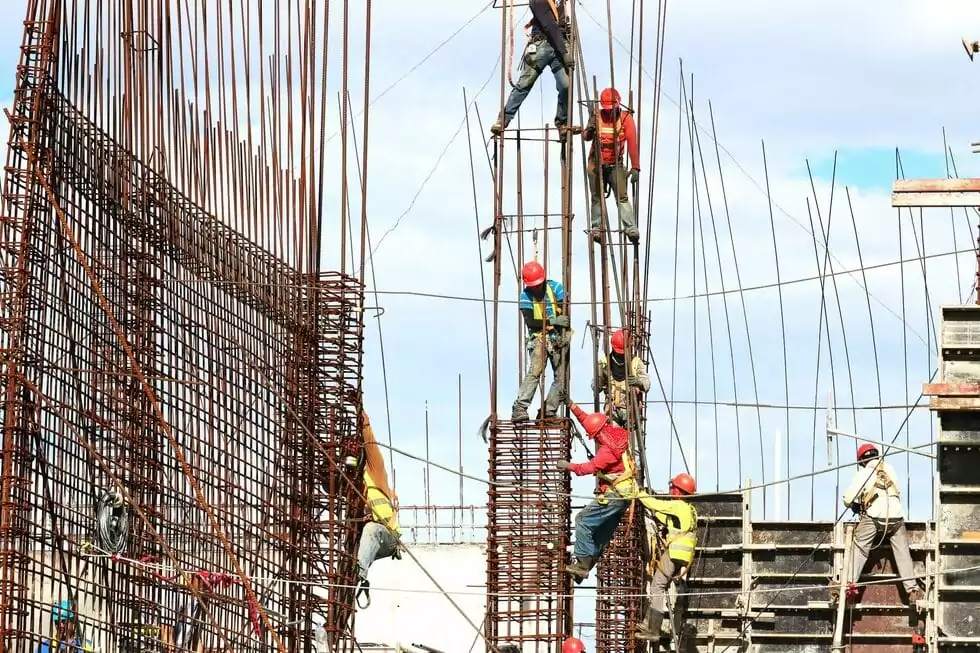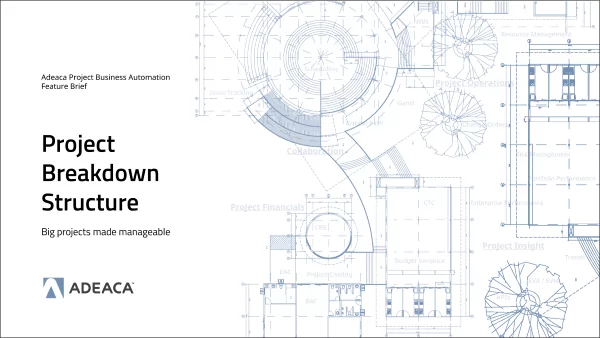If your company is a project business running large, complex projects, you need an efficient way to manage the operations and financials of your projects to maximize performance.
For example, some construction and engineering projects can take years and involve thousands of tasks. How do you manage such an immense project? How do you keep track of everything, produce actionable metrics, and keep everyone on task?
What you need is a Project Breakdown Structure.
What is a Project Breakdown Structure?
A Project Breakdown Structure (PBS) allows you to take a large, complex project that is difficult to manage in a single entity and break it down into more manageable embedded projects. With any complex project, there are many departments, divisions, managers, controllers, planners and others involved. The PBS allows each of them to manage their own part of the project independently, while providing consolidated oversight and control to higher-level stakeholders.
This structured hierarchy of projects allows for the separate but connected management of the finances and operations of a project.
The PBS allows an unlimited number of embedded projects to be subsumed under a Parent Project. In addition, there can be as many levels of the Parent-embedded project relationship as needed. Once a complex project is broken down into manageable embedded projects, it’s easier to manage your budget and tackle individual tasks. The PBS enables:
- Better Cost Control: The PBS allows you to manage your budget at the detail required for optimal control while maintaining executive oversight. Real-time project financial metrics such as EAC, EVA and variances, tracked separately in embedded projects create more accurate forecasts for the business units and drive costs down through enhanced manageability.
- Improved Risk Readiness: The PBS creates greater transparency and accountability. With more granular controls placed into the hands of managers at the appropriate level, issues are identified faster and can be resolved more readily within the project super-structure.
- Improved Delivery: With a PBS, project managers and task owners have complete control over their components while fitting into the overall structure of a large project. This results in a more effective and efficient workflow at every level of management that delivers more projects on time.
When to Use a PBS
How do you know if you need a PBS? Here are a few ways the PBS can help you better tackle big projects:
- Project Delegation: Breaking up a big project into smaller embedded project components makes it more manageable by creating clear distinct areas of responsibility. It enables granular project-level controls and metrics for every component to ensure better financial management and delivery.
- Accountability and Performance Tracking: The PBS allows you to track the budgets and performance of each unit to ensure all are operating profitably. This transparency allows you to pinpoint problems faster and more accurately to control costs and risks.
- Project Periodization: Breaking up the project phases into separate embedded projects creates clearer reporting for financial periods and better manageability through distinct areas of accountability.
We will take a deep dive into each one in a different blog.
What are the Benefits of the PBS?
As projects become larger and more complex, project businesses are searching for a solution to help them better manage the increased number of tasks, costs and risk associated with it. The PBS makes complex projects more manageable by breaking them down into more controllable components. Project businesses will be able to manage and control costs and risks at a granular level while maintaining executive oversight. The PBS maximizes efficiency, control and visibility, but also lowers costs and boosts profitability. Ultimately, you’ll be able to deliver more projects on time and within budget.












